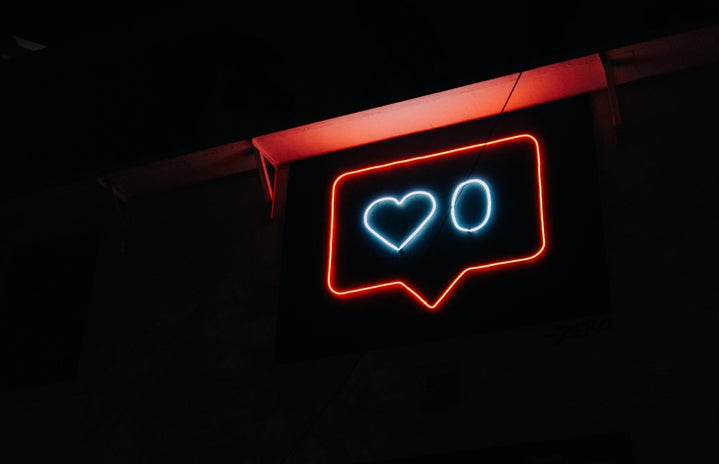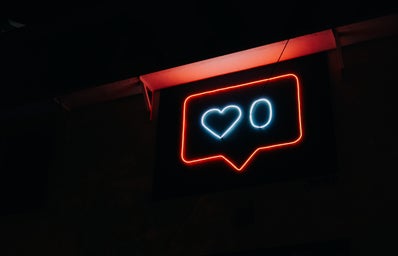As I sit at the dinner table with my family I stare down at my evenly portioned plate filled with grilled barbeque chicken, salted corn on the cob, and buttered rotini noodles. “I ate a late lunch today, I’m not hungry,” I say as I skid my chair back and dismiss myself from the table.
My mom shudders as she watched my slowly fading body disappear around the corner and into my room. I shut the door behind me. I had not eaten a late lunch, in fact, I had not eaten lunch at all. Or breakfast for that matter. A wave of disgust swept through me. “Why would my mom add sugary barbecue sauce to the chicken; why would she add salt to the corn; why would she slather the noodles in butter… or even serve carbohydrate loaded noodles at all?!”, I thought to myself. “I can’t eat any of that!”
My seventeen year old, 5’5’’, 115 pound self was convinced that I was overweight, pudgy and out of shape. No I wasn’t. Nor was I pudgy, but I was definitely unhealthy in the sense that I was starving my body, depriving myself from vital nutrients and creating a severely altered mental image of myself in my mind by comparing myself to the sickly images of young women with stick-like figures and protruding hip and collar bones.
~
This unapologetic obsession of mine came about during the beginning of my senior year of high school. My pre-adolescent, stick-like body figure was changing into that of a young women’s. Curves began to slide over my hip bones and chest; my body no longer resembled that of a child, or that of the models I followed on my social media networking sites, for that matter.
I didn’t develop an eating disorder over night, but as my senior year went on, the thoughts I had about my body and about the food that went into my body became dark and dangerous. I couldn’t stop comparing myself to these seemingly perfect Internet models.
Counting calories. Weighing myself multiple times daily. Obsessing over desserts on Pinterest that I wouldn’t let myself eat. Filling my stomach with water to subdue the rumbling from food deprivation. Constantly scrolling through the profiles of Instagram models with thigh gaps, flat chests, and protruding hip and collarbones. This became my life, if you can even call these activities living.
~
That night as I sat in my room curled up on my princess pink comforter while my family ate an average dinner, I found myself, almost unconsciously, picking up my phone and opening the Instagram application. My stomach rumbling with hunger, I tried to convince myself that if I wanted to be thin and beautiful like the girls taking over my Instagram feed, I would have to ignore the empty pains in my stomach.
I found myself locking my phone, yet again, with tears rolling down my face with what became a frequent thought running through my mind, “why don’t I look like her?”
Social media, where users exchange photos and where communities develop over common interests, had become a breeding ground for my distorted body image and for contributing to the development my eating disorder.
~
No matter how much worse the pictures would make me feel, I would still continue to scroll through the “popular page” on Instagram. “Pretty girls don’t eat,” “When you think about eating, just imagine the skinnier you”, were the types of comments I would come across.
I looked to other ill users on social media networking sites to provide me with a sort of superficial, technological support as we all took part in the self-destruction of our bodies and health. I looked up to other social media users that promoted the notion that an eating disorder is a desirable way of life, not a serious mental illness.
~
My eating disorder started, most significantly because I believed the media’s messages that to be beautiful, meant you had to be extremely thin.
During such a vulnerable time as high school, I looked where ever I could to gather information such as how to fit in, how to be accepted by fellow peers, how to be beautiful. Looking to social media for such definitions, instead enhanced more negativity regarding my body and led me to develop a horrible disease, anorexia.
With social media ever so prevalent in today’s society and in young children’s lives, it is so important to assess the implications that such technological platforms have on these young children’s and teenager’s mental and physical health
~
Eating disorders comprise of the number one psychological killer nation wide. Anorexia has a mortality rate 12 times higher than any other cause of death in women ages 15 to 24, according to the National Institute of Mental Health.
I consider myself lucky. Lucky in the fact that although I had to experience a period of my life in mental and physical distress because of the horrible disease that momentarily took over my life, I was able to build up the strength to ask for help, overcome the harsh mental thoughts, and ultimately beat anorexia. For many, this may not be the case, and awareness of the implications of the prevalence of eating disorders needs to be spread.
Yes, my use of social media definitely aided in the development of my eating disorder, but it is also important to look at the reverse side of the significant role the Internet can play in preventing eating disorders. Instead of using technology to enhance eating disordered thoughts through pictures of starving young women and pro-eating disorder profiles, technology can be used in a positive way to inform others about recognizing eating disordered behavior and can also be used to form support groups for those suffering.
Social media networking sites should take steps to promote healthy attitudes towards food and healthy eating habits and discourage, or ban pro-eating disorder content from their sites. Individuals also need to be encouraged to share their personal stories and processes and photos of recovery on social media, using positive hashtags like #edrecovery.
Through technology we, as a society can, instead of promote eating disordered behavior, can promote the recognition and treatment and prevention of eating disorders.
Image via Giphy

